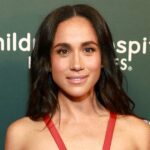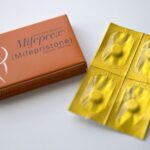On July 25, 1978, Louise Joy Brown became the first baby in the world to be born through in vitro fertilization.
Known as the first “test-tube baby” — although the IVF process actually takes place on a petri dish — her birth was made possible thanks to the cutting-edge research of three British scientists: Dr. Robert Edwards, Dr. Patrick Steptoe and Jean Purdy. At the time, the trio had been working together for a decade on IVF, a procedure where the sperm and egg are combined outside of the body and the resulting embryo is then implanted in the uterus.
Though Dr. Edwards, Dr. Steptoe and Purdy had been able to create viable embryos, they had yet to achieve a successful pregnancy — that is, until Louise’s revolutionary birth in 1978.
Since then, more than 12 million babies have been born as a result of IVF and other assisted reproductive technologies. The procedure has helped millions of people struggling with infertility and has made parenthood possible for same-sex couples and single individuals.
Now, a new Netflix film, Joy, pays tribute to the people who pioneered IVF and made Louise’s birth — and millions of others — possible. The fictionalized retelling, which stars Bill Nighy, James Norton and Thomasin McKenzie, began streaming on Netflix on Nov. 22.
Here’s everything to know about the first IVF baby, Louise Joy Brown, and where she is now.
Who is Louise Joy Brown?
Louise Joy Brown became known as the world’s first “test-tube baby” when she was born via in vitro fertilization on July 25, 1978, in England.
Her parents, Lesley and John Brown, had struggled with infertility for nine years, according to The New York Times. Tests revealed that Lesley’s fallopian tubes were blocked, making her unable to conceive a child on her own. However, a doctor at a local health clinic informed Lesley about Dr. Patrick Steptoe, who was developing a treatment for women with blocked tubes. Though the experimental procedure offered just a “one in a million” chance of success, Lesley turned to Dr. Steptoe for help, according to the website of the world’s first IVF clinic, Bourn Hall.
With the help of Dr. Steptoe, Dr. Robert Edwards and Jean Purdy, Lesley became pregnant through in vitro fertilization in December 1977, according to the BBC. In July 1978, healthy baby Louise was born by cesarean section at Oldham General Hospital in England — making her the first baby conceived by in vitro fertilization to ever be born.
Not only did Dr. Steptoe and Dr. Edwards make Louise’s birth possible, they also played a part in naming her. The two suggested a middle name that would pay homage to the influence Louise’s birth would have for generations to come.
“Doctors gave me the middle name of ‘Joy’ because they said my birth could bring joy to many people,” Louise recounted to PEOPLE in 2017. “I want to live up to that name.”
Louise’s parents would go on to have a second child via IVF: their daughter, Natalie, was born in 1982 and became the 40th child in the world to be born thanks to in vitro fertilization.
What was the public reaction to Louise Joy Brown’s birth?
Louise began to attract attention from the press and the public before she was even born. When news of Lesley’s pregnancy via IVF was leaked to the media, she was forced to go into hiding to protect herself and her unborn child.
“We were concerned that she would lose the baby, the fetus, because the press were chasing Mrs. Brown all over Bristol where she lived,” Dr. Edwards told the BBC in 2008. “So secretly, Patrick Steptoe hid the mother in his car and drove her to his mother’s house in Lincoln — the press didn’t know where she was.”
And while Lesley’s cesarean section was planned for the middle of the night to avoid alerting the press, the birth itself was filmed to prove the damage to her fallopian tubes.
“Otherwise, there would have been skeptics who might claim that she could have become pregnant naturally, no matter what we said,” Dr. John Webster, who delivered Louise, told the BBC in 2003.
Louise’s birth became an international media sensation, and the newborn appeared on the covers of newspapers and magazines across the world — including PEOPLE, which had a three-page feature story in the Aug. 14, 1978 issue about “Britain’s historic test-tube baby.” Lesley, John and baby Louise also embarked on a six-month media tour after the birth, visiting Japan, the U.S., Canada and Ireland, according to the Bourn Hall fertility clinic.
And while the Browns received hundreds of cards from well-wishers and those struggling to conceive, there was “hate mail” as well, as Louise recalled to the BBC in 2015. Some raised questions about the ethics of in vitro fertilization, while others criticized the Browns for making the birth so public.
“My parents didn’t have a choice about making it public,” Louise told TIME in 2018. “If they didn’t, they would have had people asking ‘Why can’t we see her? What’s wrong with her?’ ”
She continued, “Steptoe and Edwards needed the birth to be public. Had there been anything at all wrong with me, it would have been the end of IVF.”
Where are Dr. Steptoe, Dr. Edwards and Jean Purdy now?
All three of the scientists responsible for in vitro fertilization have since died.
Purdy died on March 16, 1985, from malignant melanoma at just 39 years old, according to Bourn Hall, the fertility clinic she helped found. Three years later, on March 21, 1988, Dr. Steptoe died at the age of 74, The New York Times reported. He also had cancer, his family shared at the time.
Dr. Edwards survived his colleagues by more than two decades, until his death on April 10, 2013, at the age of 87, per The New York Times. Prior to his death, he was awarded the Nobel Prize in 2010 for his groundbreaking work developing in vitro fertilization. Since the Nobel Prize is not awarded posthumously, neither Dr. Steptoe nor Purdy could be recognized.
Louise paid tribute to Dr. Edwards after learning of his death in 2013.
“I’ve always regarded Robert Edwards as like a grandfather to me,” she told The Guardian. “His work, along with Patrick Steptoe, has brought happiness and joy to millions all over the world by enabling them to have children. I am glad he lived long enough to be recognised with a Nobel prize for his work and his legacy will live on with all the IVF work being carried out throughout the world.”
Where is the first IVF baby, Louise Joy Brown, now?
As of 2017, Louise was a clerk for an international sea freight company, in addition to her work as an advocate for the procedure that made her existence possible.
She is currently an ambassador for Bourn Hall (the IVF clinic founded by Steptoe, Edwards and Purdy after her birth), Babble Health (an online platform sharing reproductive health information and advice) and Joys & Beginnings (an initiative helping people in India with infertility). In addition to her ambassador roles, Louise frequently performs speaking engagements around the world, sharing her story as the world’s first IVF baby.
After her parents died (John in 2007 and Lesley in 2012), Louise wrote a book titled Louise Brown: My Life As the World’s First Test-Tube Baby in their honor.
“I felt that their memories needed to be preserved and I thought it was important for people to know the story from the family’s point of view,” Louise told PEOPLE in 2017. “I was thankful that my parents took me out of the limelight when I was young, so that I could have a normal upbringing.”
In her personal life, Louise married Wesley Mullinder, a security officer, in 2004. The couple have two sons together: Cameron, born in 2006, and Aiden, born in 2013. Both children were conceived without the help of fertility treatments.
Louise has been a part of and shared her excitement over various depictions of her conception and birth, including Netflix’s 2024 movie, Joy. A month before its release, Louise posted the trailer on Instagram and wrote in the caption, “Am really excited about this can’t wait ❤️❤️.” She also attended the film’s Headline Gala at the BFI London Film Festival in October 2024.
Earlier in the year, Louise celebrated the premiere of a stage show in Bristol called A Child of Science, starring Tom Felton and Sonoya Mizuno.
Read the full article here










